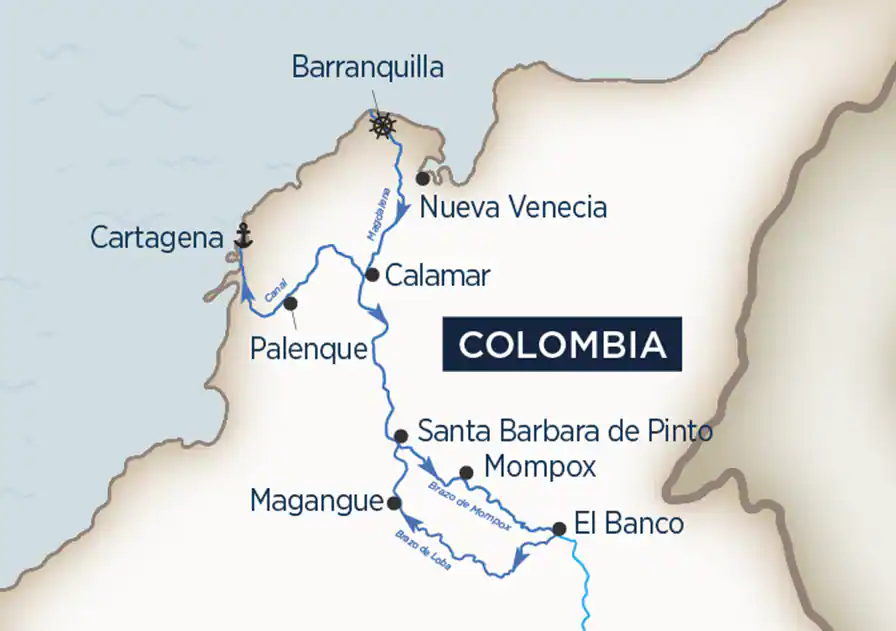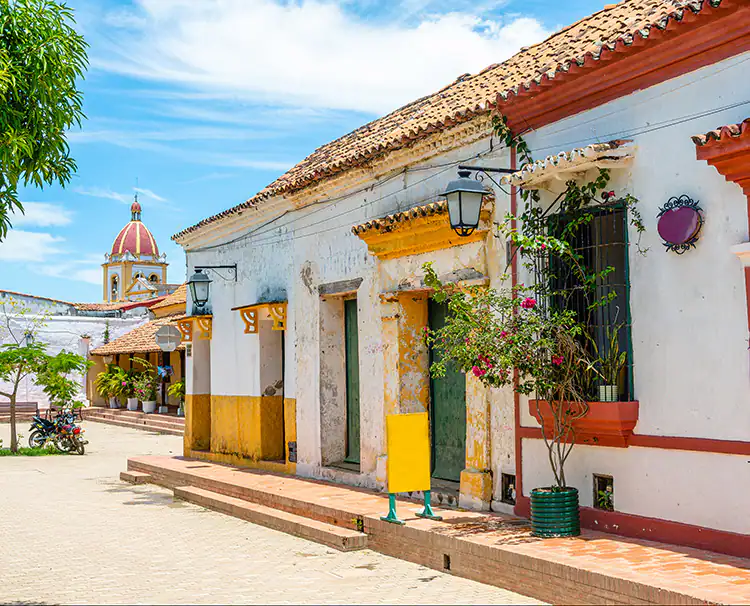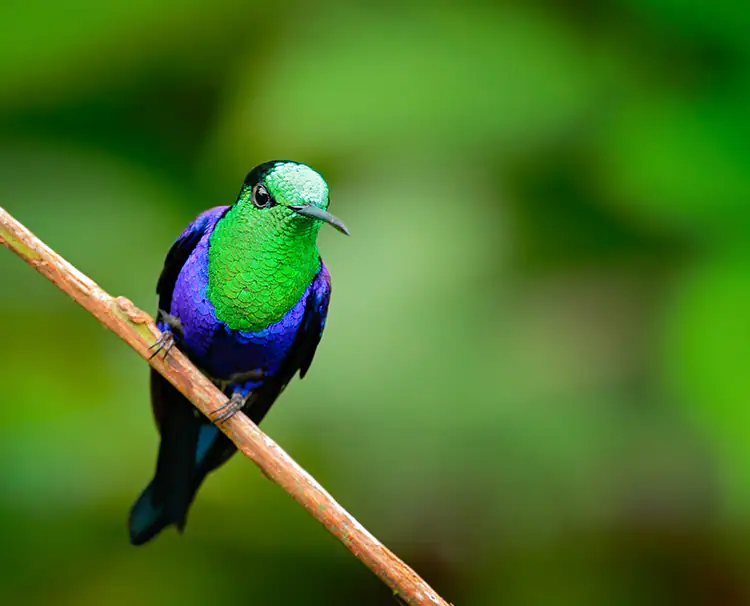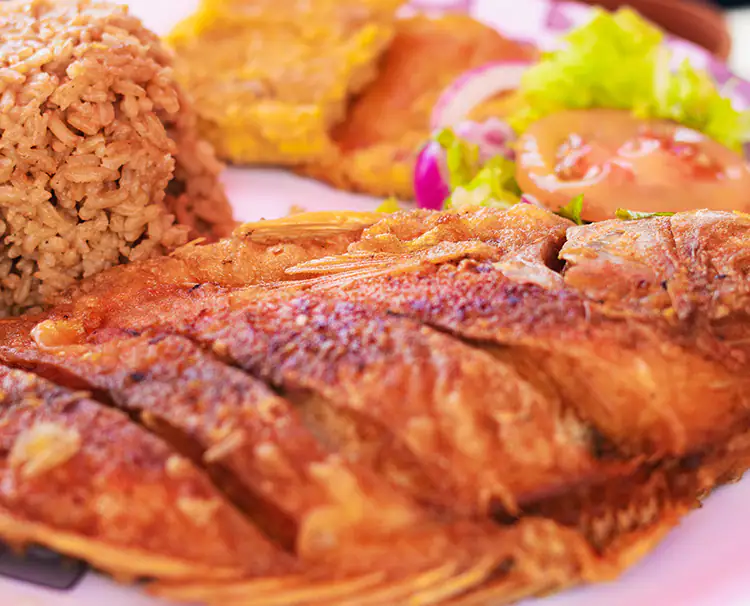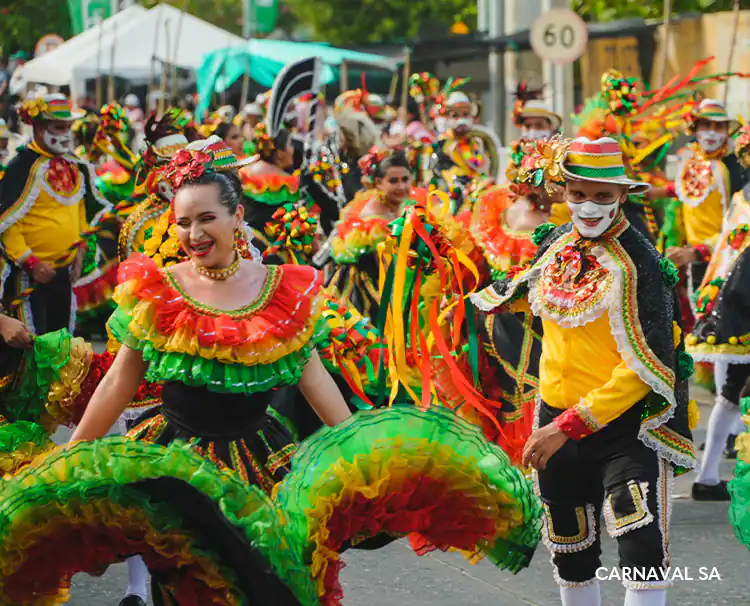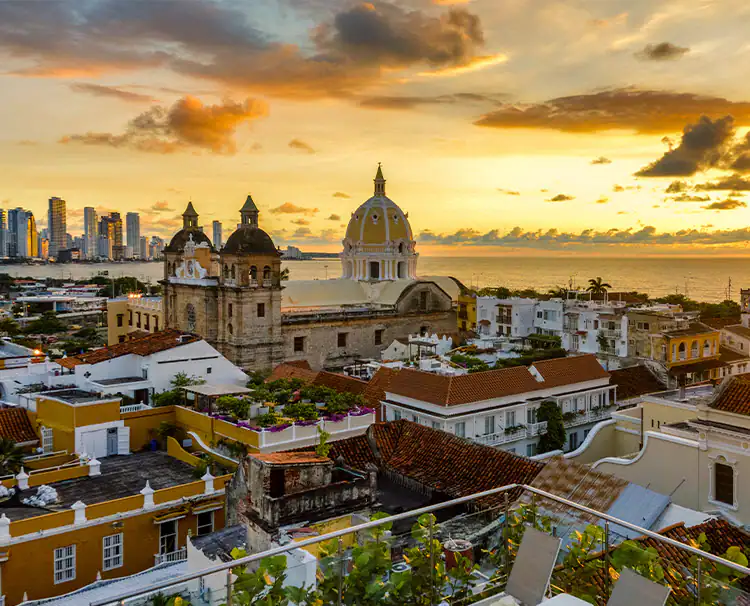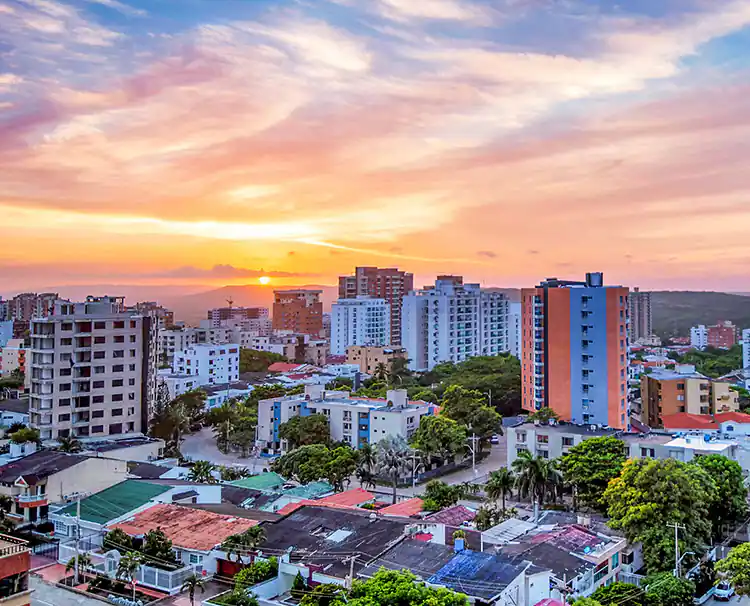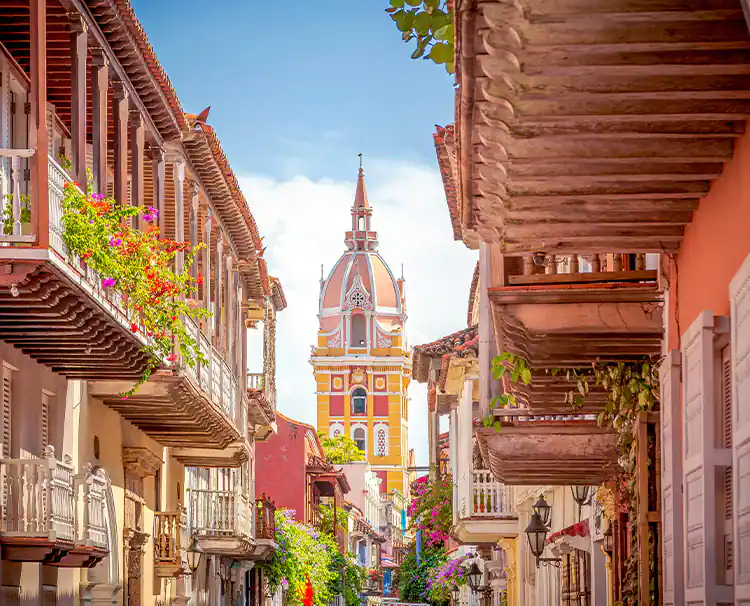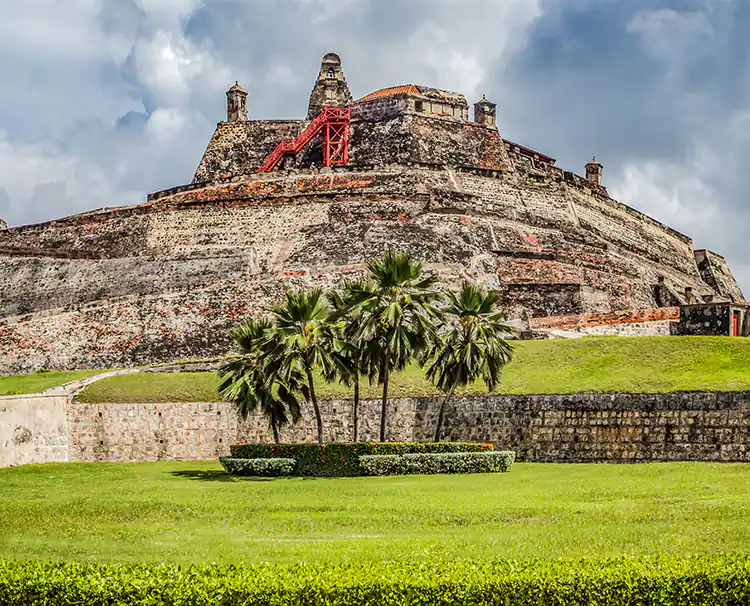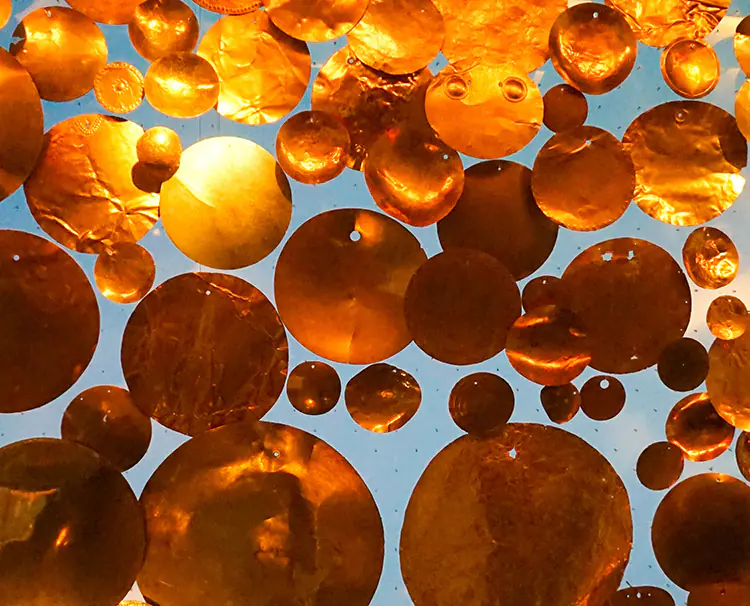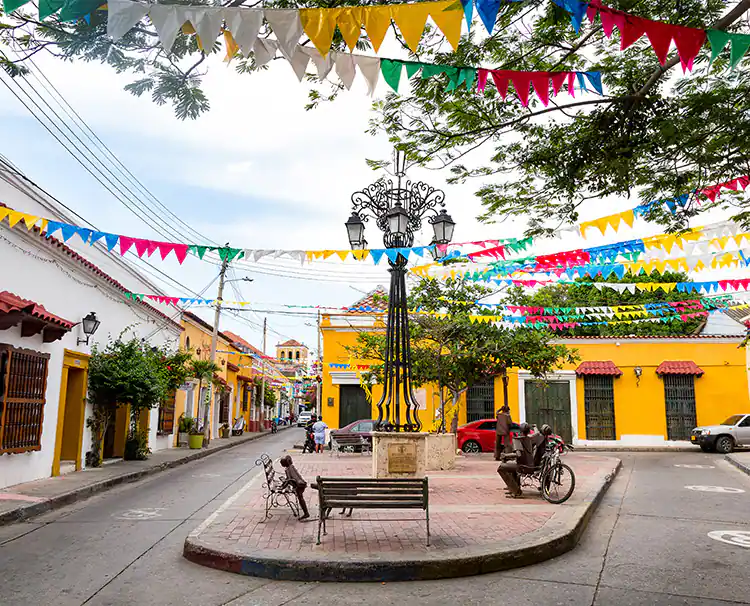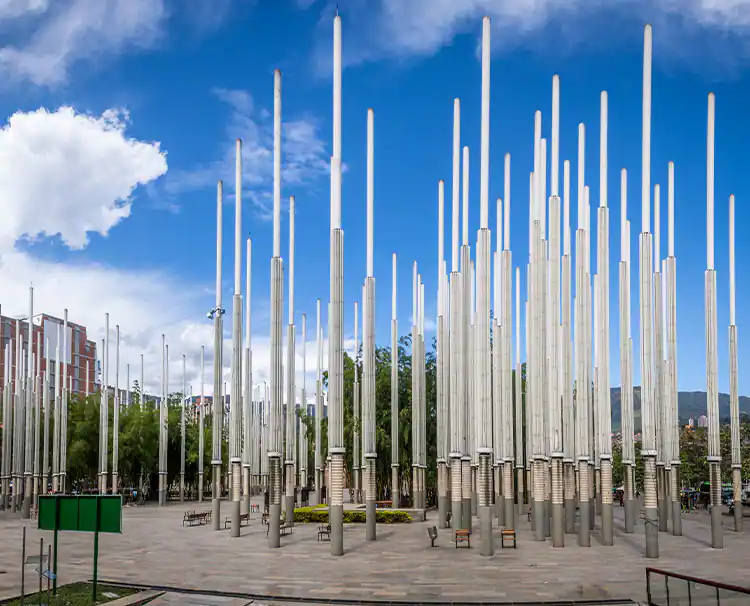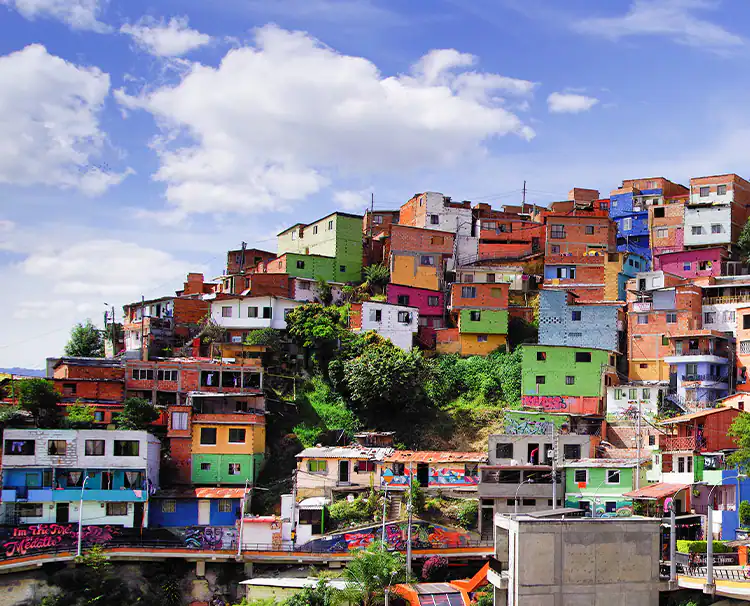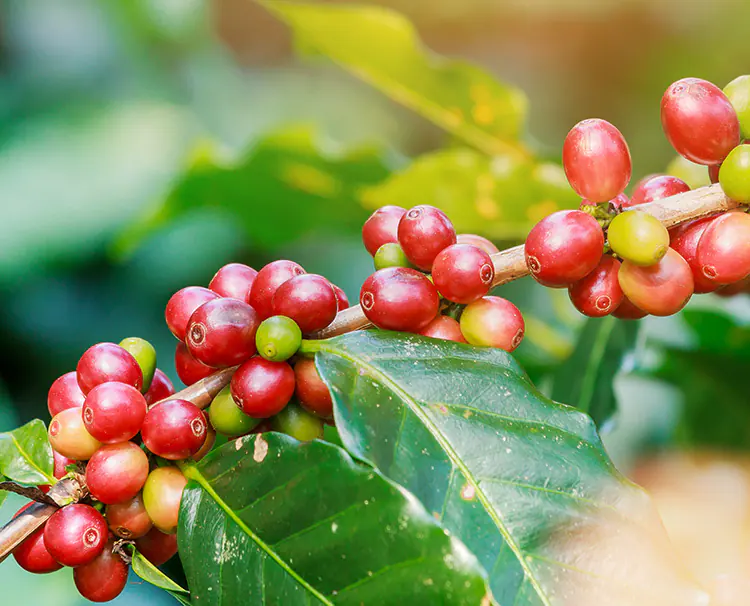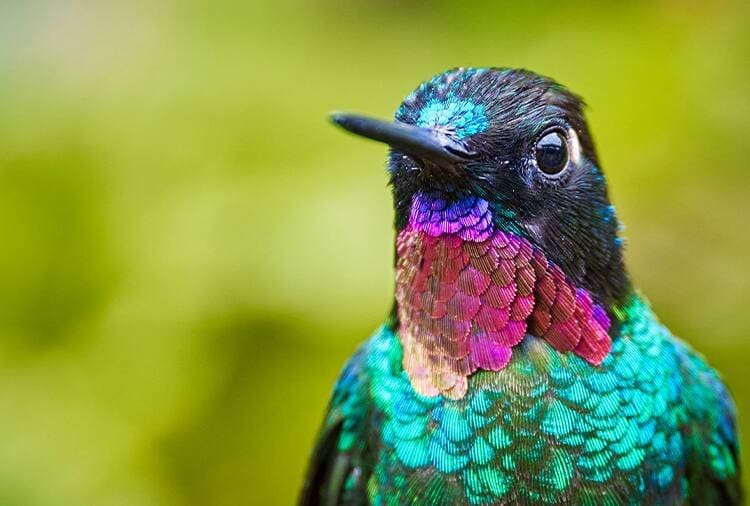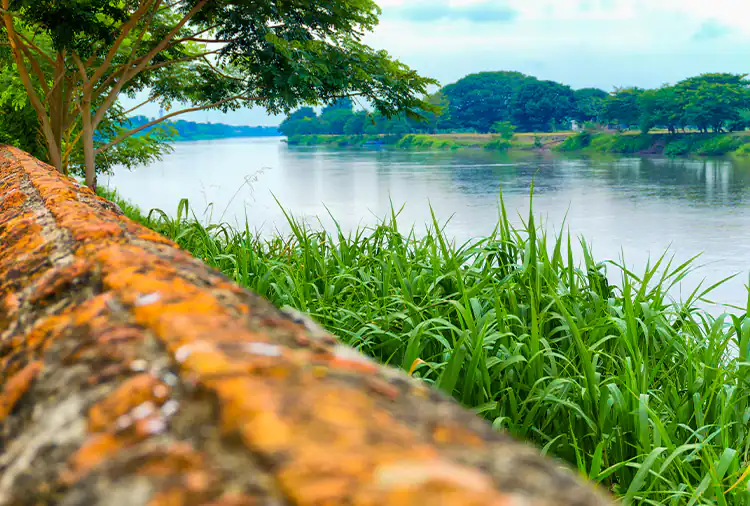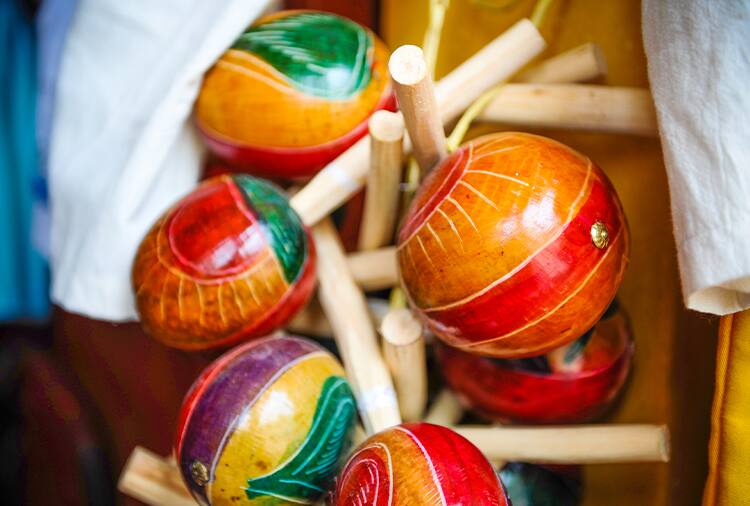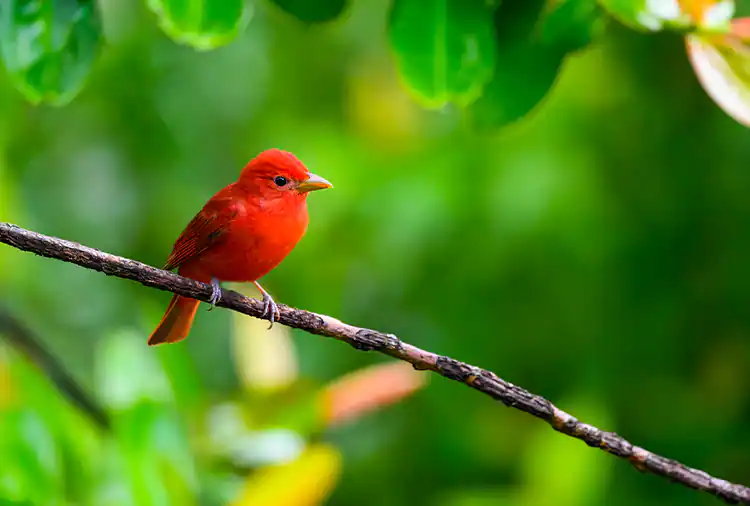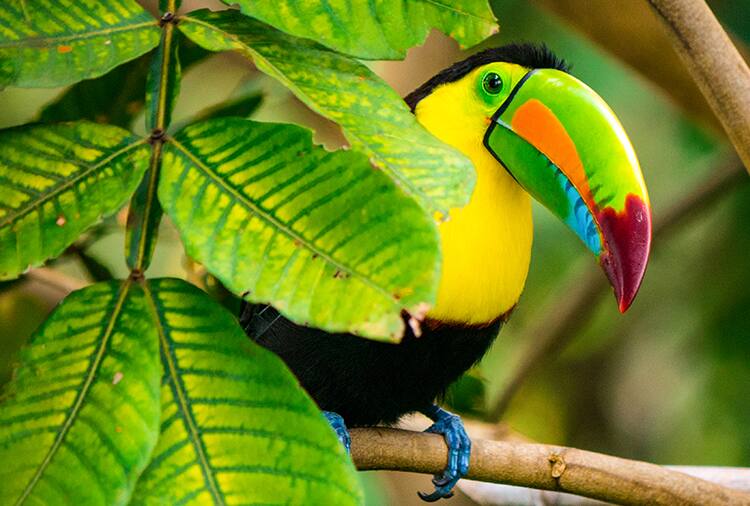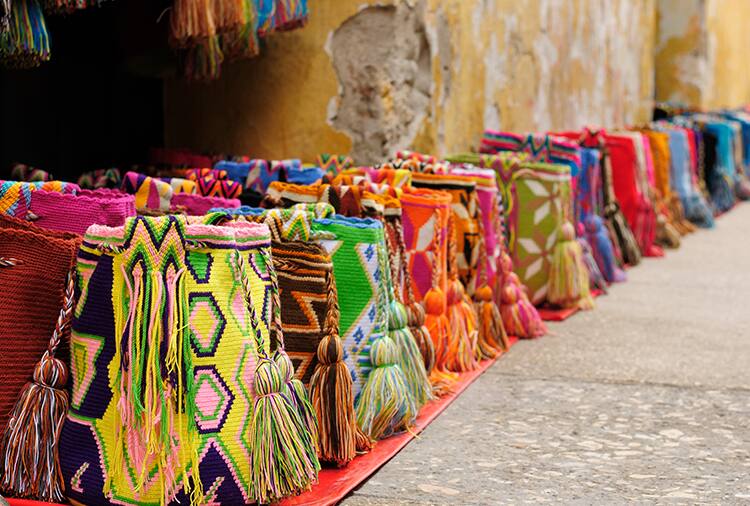7-night Cruise
CRUISE FROM : CRUISE FROM: BARRANQUILLA TO CARTAGENA
Embrace the magic of Colombia as you explore the “Land of a Thousand Rhythms” and its magnificent Magdalena River during this special 7-night river cruise journey. Move to the beat of a variety of Latin American musical styles including cumbia and vallenato, reveling in exciting performances at a colorful Carnaval experience in Barranquilla just for AmaWaterways guests. Drink a steaming cup of the country’s famous coffee as you listen to the calls of tropical birds and wildlife unique to Colombia’s biodiverse ecosystem. Discover timeless traditions practiced by the friendly guides, welcoming residents, and creative minds who comprise part of Colombia’s diverse population. Enjoy the soul and spirit of Colombia as you sail the Magdalena River along with AmaWaterways, the Heart of the River™.
Ports and excursions are subject to change – please refer to your final travel documents for the most up-to-date information.
ITINERARY DETAILS:
Day 1, BARRANQUILLA. Arrive in Barranquilla and settle into your stateroom as you prepare for your journey along the Magdalena River. In the evening, enjoy a special Carnaval celebration, bringing the full traditional experience exclusively to AmaWaterways’ guests allyear round. Widely considered one of Colombia’s most important folkloric celebrations, the Carnaval of Barranquilla has also been declared a UNESCO Masterpiece of Oral and Intangible Heritage of Humanity, and you will get to revel in this truly authentic experience as you learn the Carnaval’s motto: Quien lo vive, es quien lo goza (Those who live it are those who enjoy it).
Day 2, NUEVA VENECIA. Visit the Floating Village of Nueva Venecia. A charming town filled with inviting locals, Nueva Venecia, or “New Venice,” can only be navigated by boat. With its beautiful colonial houses, vivid architecture and local sanctuary protecting the native flora and fauna, this town highlights the beauty and warmth of Colombia. While here, explore this village and learn more about the lives of its people during a guided tour. Enjoy the traditional crafts and art that is on display, learn about the techniques the fishermen of Nueva Venecia use, and taste the local delicacies as you embrace this village and its unique culture.
Day 3, SANTA BARBARA DE PINTO MOMPOX. Spend your morning in Santa Barbara de Pinto, located on the banks of the Mompox arm of the Magdalena River. Enjoy a walking tour through this traditional town, where you may see local landmarks such as the Santa Barbara Church and enjoy intricate handmade crafts created in the town. In the afternoon, arrive in the island town of Mompox, where you will be welcomed with open arms and lively music as local musicians treat you to an exclusive jazz performance.
Day 4, MOMPOX. A town frozen in time, Mompox embodies the appearance of what many villages looked like during colonial times. Founded in 1540, this remote village became an important Spanish trading post. Some Spaniards found Mompox to be a haven for keeping gold and other treasure protected from the pirates that pillaged coastal cities like Cartagena, and with this precious metal and the work of skilled artisans from Spain came beautifully crafted artifacts. Since then, the town has become famous for its incredible filigree jewelry, which you can learn more about during your tour of this tour in the afternoon. While visiting this unique island, journey through the incredible ecological Cienága Pijiño region, exploring the massive lake that is home to a variety of flora and fauna native to the region. In the afternoon, take a stroll through this storied town on a guided walking tour. With stunning colonial churches, breathtaking nature surrounding the town, and delicious local delights such as capa cheese and butifarra, Mompox is sure to be a highlight of your journey along the magnificent Magdalena River.
Day 5, MOMPOX EL BANCO. Bid farewell to in Mompox before embarking on a scenic cruise down one of the most breathtaking stretches of the Magdalena River – La Mojana Region – and reaching the town of El Banco, nestled at the intersection of the Magdalena and César rivers. Founded in a location strategic for both the native people and the Spaniards, the town was repeatedly destroyed in their struggles and then rebuilt atop its ashes. In 1749, a freed black slave named José Domingo Ortiz led a group of settlers to this special location, carrying with him a statue of the Virgin Mary, staking this place as their new home. Because of this connection, the Virgin of Candelaria, a special invocation of the Virgin Mary, is specially venerated in this region. Embark on a guided walking of this incredible destination and learn more about its history as the birthplace of cumbia, an iconic genre of music and dance that has now been popularized around the world. What began as a courtship dance practiced by African slaves later incorporated American steps and European and African instruments has become a worldwide sensation, which is especially popular in the Andean region of Colombia. In the evening, enjoy an exclusive dinner in town and witness an incredible cumbia performance by locals.
Day 6, MAGANGUE CALAMAR. Witness the sights, hear the bird calls, and watch the wildlife around you as you spend the day in Magangue. Immerse yourself in the presence of Colombian nature surrounding this city on a birdwatching tour, giving you a unique opportunity to see birds only found in this specific part of the country. You can also choose to explore the picturesque Ciénaga, teeming with Colombian life, on another fascinating excursion. Later in the day, visit Calamar. Located at the entrance of the Canal del Dique, this town was first settled in 1840. Witness historic sites such as the Iglesia de la Inmaculada Conception as you tour this beautiful destination by paolo (a bicycle taxi for two).
Day 7, CARTAGENA. Start your day by exploring the incredible UNESCOdesignated San Felipe Castle, the fortress that defended Cartagena from French and British attacks. As you walk through Cartagena, learn more about emeralds and the impact of these precious gemstones on the city’s history. In the afternoon, delve deeper into the enriching history of this Caribbean city as you visit the Gold Museum, which features ancient gold artifacts from the indigenous cultures found in this region. You will also visit the Caribbean Naval Museum. Follow the story of this fascinating country and its incredible naval history from preHispanic times until the present. In the afternoon, enjoy a tour through the breathtaking Getsemaní neighborhood. With the vibrant colors of the homes and street art as well as the mouthwatering local delicacies that can be found throughout the area, this historic neighborhood will delight all your senses. In the evening, watch the sun set on Cartagena during a special sunset cruise.
Day 8, CARTAGENA. Bid your ship and crew farewell as you disembark and prepare for your flight home.
Experience More Connections
We have gathered these unique stories, recipes, interviews, and testimonials to enrich and inspire you before your journey with AmaWaterways. In anticipation of your upcoming river cruise, we hope you see how an unforgettable travel experience can truly be yours when sailing with us along the rivers of Europe, Asia, Africa and South America.
Marvels of the Magdalena River
Immerse yourself in the highlights of Colombia along this magnificent river.
Vibrant Colombia invites to you to explore the vast history, culture and towns that bring it to life. Here is a small sample of the marvels of Colombia you may experience on our all-new Magdalena River journeys.
Rich History
Native culture and Spanish influences woven together through the course of history can still be witnessed along the Magdalena River.
Cartagena became a major port during the Spanish conquest, funded by the Spanish crown, which led to many pirate raids on the city. To protect against these raids, the Spanish royalty ordered the construction of stone walls around Cartagena, which can still be seen today. This fortification is the reason Cartagena is also called la ciudad amurallada —“the walled city.”
Because of the fear of attacks from pirates, many Spaniards felt they needed to have a safe place to keep their gold – and the town of Mompox served that purpose. With so much gold housed here, some of it was used to craft beautiful artifacts to celebrate religious ceremonies in the newly evangelized communities. Soon, gold- and silversmiths began to flock to this destination from Spain, and the delicate and detailed style of craftsmanship they brought with them has been preserved through the years. Today, you can visit this colonial town and purchase fine filigree jewelry for which Mompox has become renowned.
Palenque has the unique honor of being the first “free town” in the Americas. The Spaniards and the former slaves agreed on a Capitulation of Peace in 1603 and, in 1713, the Spanish crown issued a Royal Decree that officially freed the people of Palenque from slavery. With the autonomy this afforded, this vibrant town was able to continue its unique traditions and preserve its culture, which UNESCO officially recognized when they declared Palenque a Masterpiece of the Oral and Intangible Heritage of Humanity in 2005.
A Bird Watching Paradise
With around 1,930 species of birds in Colombia (more than the number of species found in the United States and Canada combined!), these feathered friends are vital to the river’s ecological system, and guests may see many rare or unique species while enjoying our special Colombia itinerary.
One such bird is the cianeguo hummingbird. Also known as the sapphire-bellied hummingbird, this colorful, tiny creature is found only in the mangroves of Ciénaga Grande de Santa Marta and the arid scrublands directly beside it. Considered an endangered species, this blue and green bird is believed to have a decreasing population of between 285 to 440 mature adults, so to see it in its natural habitat is a unique delight.
The Northern screamer, known locally as chauna chavaria, also finds its home along the majestic Magdalena River. This stout-bodied thrives in the water, feeding on the leaves, stems and roots of aquatic plants. Though it is near threatened, you will likely hear its distinctive call of kleer-a-ruk, cherio! throughout your river journey.
Many other colorful birds flock to this magnificent river’s banks as well. On each sailing, you may enjoy unique sightings of these splendid birds, as well as a variety of toucans, eagles, quails, tinamou and more!
Taste Local Delicacies
The Magdalena River brings you to many wonderful destinations that are filled with delicious local treats that you can try. In Mompox, taste capa cheese, a mild cheese widely enjoyed in this beautiful town. Butifarra, a savory sausage essential to many Colombian cuisines, and chorizo, a spicy sausage made of pork flavored with seasonings such as smoked paprika and garlic, are also delicious dishes offered here. This destination is also known for its wonderful desserts made with lemons and pineapples, which are grown throughout the country.
In Palenque, the city’s famous palenqueras – women who sell goods with vast baskets of traditional treats and tropical fruit balanced on their heads – offer a variety of delicious goods along the colonial streets. At their market stalls, enjoy irresistible sweets such as coconut cake, tamarind balls (made with tamarind fruit and spices), sugared papaya, traditional cheeses and more.
Another meal you can enjoy during your Colombian journey is posta negra cartagenera, a mouthwatering dish that began in Cartagena. After marinating the meat in a variety of herbs, onions, and garlic, it is traditionally seared with its fat and butter, blending the savory flavors together. Once the meat is cooked, the dish is served with a delightful sauce, perfectly blending a spectrum of incredible flavors into one celebrated meal.
Seasonal Celebrations in Colombia
Discover colorful festivities and all-around Felicidad during Colombian celebrations, all brimming with life.
Festivals and holidays are central to Colombian culture, and there is no doubt that Colombia can throw a celebration like no other. From honoring cultural heritage and music to celebrating religion and flowers, you can find an abundance of festivities throughout Colombia every month of the year. Over 80 festivals take place annually, and they are not to be missed! Join us on the Magdalena River and learn more about Colombian celebrations!
Carnaval de Barranquilla
(typically occurs in late February – early March)
Barranquilla boasts the second largest Carnaval celebration in the world. In 2003, UNESCO declared the Barranquilla Carnaval a “Masterpiece of Humanity’s Intangible and Oral Heritage.” Four days before Lent, the city breaks out into boisterous festivities. Carnaval Barranquilla begins with the six-hour La Batalla de Flores(The Battle of the Flowers), which dates back to 1903 when the people of Colombia celebrated the end of the One Thousand Days War by fighting with flowers in place of bullets. During the parade, the Carnaval Queen oversees folk dancers, fire breathers, and musicians. The next two days are filled with dance competitions and parades. The fourth and final day features the burial of the mythical Joselito. This is marked by two parades: one mourning the figure’s death, and one representing the joy of celebrations.
Every year, attendees shout the festival’s joyful motto into the streets: “Quien lo vive es quien lo goza,” which translates to “He who lives it, enjoys it.” To truly understand Carnaval, one must immerse themselves in the celebrations. Over the four days, the streets of Barranquilla become overrun with music, masks, costumes, floats, and an explosion of colors. If you miss the Carnaval season, don’t fret! While sailing on our Magdalena River cruises, you can experience a dynamic Carnaval performance in Barranquilla – exclusive to AmaWaterways guests!
Palenque’s Celebration of Tambores
(typically occurs early to mid-October)
Eagerly anticipated by the 4,000 townspeople of Palenque, the Festival de Tambores y Expresions Culturales de Palenque brings the community together for three days of vibrant music, graceful dance, and delicious cultural delicacies. Drums echo throughout the streets as artists display their celebratory work for all to marvel at. This special annual event showcases the heritage of the first free town in the Americas, proclaimed by a royal decree from the Spanish crown in 1961. Our Colombia itineraries showcase the spirit and music of this town on every visit, and those visiting Palenque during this time can witness the unique charm and fascinating history this special festival provides.
Mompox Jazz Festival
(typically occurs during October)
Many from across the globe venture to Mompox to celebrate its unique culture and heritage, and during this festival, everyone’s attention is centered on the music. During this international jazz festival, visitors can immerse themselves in a variety of music styles, from merengue and bachata to porro and other genre varieties from the other side of the Atlantic Ocean. Not only can festival goers expect an incredible line up of performances, they can also look forward to a plethora of educational workshops throughout the town with a focus on empowering young musicians. From bars to churches, the magic of Mompox’s music festival is showcased around every corner of the beautiful town. The closing concert in the Plaza de Santa Barbara is one of the most exciting parties one can experience in this incredible town.
Feria de Las Flores
(typically occurs in late July – early August)
Medellín’s Feria de las Flores (Flower Festival) is renowned for its spectacular floral displays and lively festivities. Set in the “City of Eternal Spring,” the festival takes place over the course of a week. The main attraction in the Desfile de Silleteros, the silleteros parade. Silleteros are the porters who used to carry colonial officials on a chair on their backs. During the event, local flower growers march through the city with massive, elaborate flower displays strapped to their backs, known as silletas. Every year, men and women parade through Medellín, proudly displaying floral depictions of their histories, land, and culture. Visit this captivating city on our pre-cruise land packages.
The Sounds and Rhythms of Cumbia
Vibrant colors, exciting drumming, and lively folk dancing are all central to Colombia’s proud heritage. Cumbia music and dance is at the heart of Colombian culture. Originating centuries ago on Colombia’s Caribbean coast, cumbia is a unique mix of Spanish, African, and indigenous tradition. It is characterized by rhythmic beats and colorful Latin-inspired costumes and instruments. Women traditionally wear long, colorful skirts and flowered headdresses. Men wear white shirts and pants, accessorized by red bandannas and a sombrero. Performers dance to the sounds of guitars, drums, and maracas. Cumbia music and dance features heavily in celebrations across the country and there are several festivals that center around the art form, including the annual Festival Nacional de la Cumbia (typically occuring in mid-August) in El Banco, Magdelena. Experience a special shoreside dinner and exclusive cumbia performance during every AmaWaterways journey along this majestic river!
A Colombian Christmas
In addition to a wide spread of festivals, Colombians have unique traditions for many holidays, including Christmas! Colombians begin their Christmas celebrations December 7th with the Día de Las Velitas (Day of the Little Candles). On this night, people line their windowsills, porches, sidewalks and streets with candles and paper lanterns. Towns and cities glow with candlelight in celebration of Mary’s immaculate conception.
In Colombia, Christmas is nothing without a bounty of food. Natilla is one of the country’s most beloved holiday dishes. The milk-based, pudding-like snack is usually enjoyed alongside other festive foods such as buńuelos (mouthwatering fried dough balls – served piping hot). These delicious treats are most often enjoyed during the novenas, the nine nights leading up to Christmas when families gather to recite traditional prayers, eat, drink, and be merry. On Christmas Eve, baby Jesus is the one to deliver presents to the children rather than Santa Claus or Saint Nicholas! Enjoy Colombia’s unique Christmas traditions during special holiday 2025 departures:
Magic of Colombia: December 24, 2025
Wonders of Colombia: December 20, 2025
Join us for a taste of Colombia and its festival and holiday seasons.
The Colors of Cartagena
Golden artifacts and pastel hues decorate the city of Cartagena, the vibrant jewel of Colombia’s coastline.
From conquistadors to Carnaval, the coastal city of Cartagena encapsulates the rich history and lively Latin culture which make Colombia so special. The blend of Caribbean and Latin influences has created a seaside melting pot unlike any other city in South America. Trace Cartagena’s centuries-long journey from a Spanish colonial stronghold to the jewel of Colombia’s coastline by adding our optional Cartagena land package prior to your Wonders of Colombia journey!
Caribbean Pirates and Colonial Power
The city of Cartagena was formally founded by the Spanish in 1533, though indigenous peoples inhabited the area for several centuries prior. It wasn’t long before Cartagena became a central port for exporting gold and silver to Spain, making it an attractive site for treasure seekers and plundering pirates alike. After decades of fending off pirate raids – Sir Francis Drake once held the entire city for ransom – the Spanish Crown constructed imposing walls and rows of forts to defend Cartagena’s innumerable treasures. The 11 kilometers of walls cordoning the city are among the best-preserved fortifications in the world, and as a UNESCO World Heritage Site, Cartagena’s walls are one of the most significant attractions available to visitors. You can visit Cartagena’s Historical Center to witness the walled city at your leisure after your initial arrival in the city.
The Fortress on the Sea
As part of our optional land package, you will step into history by touring the incredible UNESCO-designated San Felipe Castle. Accompanied by a local tour guide, you will explore the hilltop fortress that defended Cartagena and its riches from naval assaults by the French and British Empires between the 17th and 19th centuries. San Felipe Castle is the crowning achievement of the Spanish Empire’s defensive network in Cartagena and an imposing reminder of their longstanding dominance in the Caribbean. Today the castle offers a commanding view of Cartagena’s picturesque bay, the very same view that allowed its defenders to protect their city centuries ago.
The City of Silver and Gold
Cartagena’s rise to power was largely owed to the massive shipments of gold and silver exported from Colombia to Spain. On your included excursion to the Gold Museum (Museo del Oro Zenú,) you will examine firsthand the plethora of ancient gold artifacts which launched Cartagena from a modest port city to a principal seat of Spanish colonial power. These beautifully preserved trinkets showcase the incredible goldsmithing culture native to the region. Housing hundreds of priceless relics from indigenous cultures prior to European settlement, the Gold Museum displays the material wealth which the Spanish were so intent on defending in Cartagena.
Later, you will delve into the impregnable safehouse of the Spanish Empire, The Vaults of Cartagena, on a guided tour. Constructed between 1789 and 1795, The Vaults’ golden arcade of bombproof columns and arches dared challengers to penetrate the 15-meter-thick walls that protected Cartagena’s core military storehouse. The Vaults were a locus of power for whomever controlled Cartagena, serving as a garrison and prison for both sides of Colombia’s struggle for independence. Today, The Vaults have transformed into a bustling marketplace: its dour cells now house brightly colored artisanal shops, and its stunning view of the Caribbean Sea conveys a sense of freedom to all its visitors.
A Colorful History Come to Life
Latin America is nothing if not colorful, and the pastel-splashed city of Cartagena is no exception. After settling into your stateroom for the river cruise portion of your journey, a local tour guide will lead you through the sights and sounds of Getsemani, a breathtaking neighborhood situated just outside of the city walls. Getsemani is an egalitarian refuge for artists, musicians, and other creatives unlike any other neighborhood in the world. Its vibrantly colorful architecture and the irresistible aroma of delicious local cuisine ensure that Getsemani will become a central memory of your time in Colombia.
What’s Included in Your Optional Land Package
2 nights in a world-class 4- or 5-star hotel
Convenient transfers between your hotel and river cruise ship
Daily breakfast at the hotel
Guided tours of the San Felipe Castle, the Gold Museum, the Caribbean Naval Museum, The Vaults, the neighborhood of Getsemani, and a sunset cruise on the shores of Cartagena
Coffee, Cable Cars, and the Cuisine of Medellín
Discover the innovative spirit of Colombia with our optional land package to Medellín, one of the most progressive cities in the world.
As the second-largest city in Colombia, Medellín is a brilliant example of the modern development transforming cityscapes across Latin America. Once beset by crime and political corruption, Medellín now stands as a shining beacon of progress, tourism, and innovation. Cable cars span the skyline above the restaurants, museums, and libraries dotting Medellín’s landscape. AmaWaterways is thrilled to offer you the opportunity to experience Colombia’s most progressive city by adding our optional 3-night Medellín land package to your Magic of Colombia sailing or before your 2-night Cartagena optional land package and Wonders of Colombia itinerary!
The Creation of an Urban Masterpiece
The first settlement in what is now Medellín was founded in 1616, but it wasn’t until the early 20th century that Medellín became a booming economic center of Colombia. Medellín’s ongoing policy of social urbanism integrates and uplifts citizens with inclusive architecture, education, and social programs that have been lauded by democracies across the world. Witness firsthand how innovative infrastructure like cable cars and outdoor escalators create a sense of connection and cohesion throughout Medellín. Not to mention, they’re an exhilarating way to get around the city!
Beyond its rich civic culture, Medellín is known for seamlessly blending urbanity with nature. During your optional land journey in Medellín, you will be struck by the stunning mountainous backdrop contrasting Medellín’s colorful urban landscape. Hiking trails, parks, and gardens can be found throughout the city, offering plenty of outdoor activities in Medellín’s famously comfortable climate. Visitors can even spot scarlet macaws, iguanas, monkeys, and other tropical fauna at certain spots within the city.
Colombian Coffee Culture
Hovering around 76°F year-round, the region’s temperate climate has earned Medellín the nickname, “The City of Eternal Spring.” Combined with its rich soil, the area surrounding Medellín is perfect for growing the famous Colombian coffee we all know and love. Included in your Medellín land package is a guided excursion into the world of Colombia’s coffee cultivation. Stand on the soil where the first coffee seeds took root hundreds of years ago, creating the region’s strong and lasting coffee culture. Taste firsthand the rich and complex flavor profiles of Medellín’s coffee beans, with notes of dark chocolate, caramel, and berries. This delicious coffee is certified by ethics organizations such as the Rainforest Alliance, ensuring that coffee is grown in a sustainable and environmentally friendly way.
The Cuisine of Medellín
Although Colombia is predominantly known for its coffee, the cuisine from Medellín is just as noteworthy. Hearty dishes such as chorizo, red beans, arepa, avocado, and plantains form the foundation of Colombia’s food culture, though Medellín boasts a particularly cosmopolitan food scene. On your Medellín land journey with AmaWaterways, visit remarkable restaurants scattered throughout Medellín such as El Cielo, a fine dining restaurant by Colombian chef Juan Manuel Barrientos which replaces traditional dishes with culinary “moments.” Barrientos’s elevated, experimental dishes earned Michelin stars for El Cielo’s Washington D.C. and Miami locations.
For something more traditional, follow in Anthony Bourdain’s footsteps and order Colombia’s national dish bandeja paisa. This mouth-watering combination of seasoned rice, pork, beans, chorizo, sunny side up eggs, and more will surely leave you feeling filled and fulfilled. No matter where you go, memories of your delicious Colombian meals will linger long after you’ve returned home.
A Metropolitan Success Story
There are few cities in the world that match Medellín’s unprecedented pace of civic development and modernization. Nowhere is this urban metamorphosis more apparent than the vibrant neighborhood of Comuna 13. On your included cable car tour through Comuna 13, witness the neighborhood’s remarkable transformation from one of the most dangerous areas in Medellín to a thriving community of art, culture, and music. Medellín has historically produced important artists such as Fernando Botero, but Comuna 13 represents new growth in Medellín’s artistic scene. Comuna 13 is living proof of Medellín’s exceptional advancements in tourism, and today Medellín continually ranks highly in tourist safety and travel desirability.
Suspended above the city streets, your cable car provides an unparalleled view of Comuna 13’s network of outdoor escalators. This infrastructural project successfully connected Comuna 13 to the rest of Medellín, spurring a cross-pollination of artistic ideas and cultural influences. This remarkable view is only possible thanks to the incredible civic achievements of Medellín, the progressive beacon of Colombia.
What’s Included in Your Optional Land Package
3 nights in a world-class 4- or 5-star hotel
Guided excursion to Medellín’s coffee farms and a city tour, including Comuna 13
The services of one of our wonderful Cruise Managers throughout your river cruise and land journey
Convenient transfers between your hotel and river cruise ship
Daily breakfast at the hotel
- Arabica Harvesting in Colombia
- Cholao Drink
- Hummingbird in Colombia
- Mompox, Colombia
- The Magdalena River
- Maracas
- Red Tanager
- Toucan
- Traditional Music
- Traditional Textiles
- Barranquilla, Colombia
- All
- Adults Only
- Adventure
- Africa Safaris & Wildlife
- Alaska
- All Inclusive
- AMA Waterways Chobe River African Safari Cruise
- AMA Waterways Danube River Cruise
- AMA Waterways Magdalena River Cruise
- AMA Waterways Mekong River Cruise
- AMA Waterways Nile River Cruise
- AMA Waterways Soulful Experiences
- AMAWaterways
- Antigua & Barbuda
- Asia
- Avalon Waterways Danube River Cruise
- Avalon Waterways Garonne River Cruise
- Avalon Waterways Main River Cruise
- Avalon Waterways Mekong River Cruise
- Avalon Waterways Moselle River Cruise
- Avalon Waterways Rhine River Cruise
- Avalon Waterways Rhône River Cruise
- Avalon Waterways River Cruises
- Avalon Waterways Seine River Cruise
- Avalon Waterways The Nile River Cruise
- Bahamas
- Bali
- Barbados
- Bus
- Caribbean Islands
- Central America
- Chobe River
- Colombia
- Cruise
- Cruise Partners
- Culture Holidays
- Curaçao
- Danube River
- Destinations & Experiences
- Dominican Republic
- Egypt
- Europe Experience
- Grenada
- Group Tour
- Honeymoon/Weddings
- Hot Travel Deals
- Jamaica
- Land Travel
- Madrid
- MOTA Preferred Partners
- Nature
- North America
- Ocean & Sea Cruise
- Panama
- Penguins
- Playa Hotels & Resorts
- Private Tour
- Regent Seven Seas Cruises
- Regent Seven Seas Cruises®
- Resorts
- River Cruise
- Rocky Mountaineer
- Saint Lucia
- South America
- South Pacific
- Spain
- St. Kitts and Nevis
- St. Martin / St. Maarten
- St. Vincent and the Grenadines
- The Nile
- The Rhine, Main, and Moselle
- The United States
- The Verandah Antigua
- Train
- Travel News
- Travel Tours
- Vietnam & Cambodia
- Virgin Voyages



